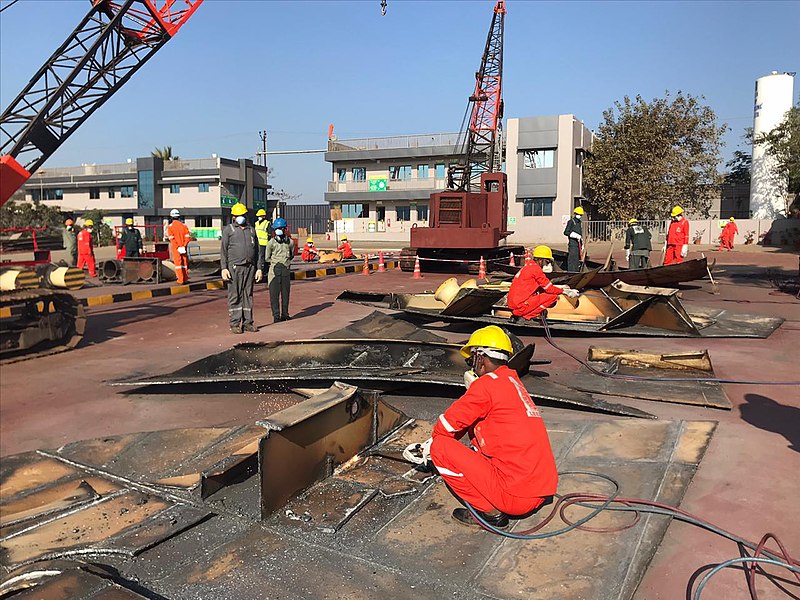Let’s open this article with a brief history on how “shipbreaking” or the recycling methods of breaking down huge ships works:
A brief History of “Shipbreaking“
“Shipbreaking” occurs after one of these huge ships is about 30 years old. At this point in the ship’s life, it becomes very expensive – to the point of being unprofitable – to repair. The ships are taken to developing countries where they are disassembled in order to salvage valuable materials such as: steel, iron and aluminum. The plastics are recycled as well. The shipbreaking industry is a very lucrative business that supports the livelihoods of a lot of people in countries such as India, Bangladesh, Pakistan, Nigeria and Ghana.

Nayeem Noor, CC BY-SA 4.0, via Wikimedia Commons
Although it is better for the environment – rather than sinking them as is – shipbreaking is a super dangerous process. Just to give you an idea, in 2010 the World Bank published a report that estimated by 2030 Bangladesh and Pakistan will have accumulated millions of tonnes of hazardous waste from shipbreaking. More specifically:
- 85,000 tonnes of asbestos
- 256,000 tonnes of hazardous chemicals known as PCBs (Polychlorinated biphenyls) – mainly from cables
- 225,000 tonnes of ozone-depleting substances
- 75,000 tonnes of paints containing heavy metals and toxins
- 720 tonnes of heavy metals
- ~2.2 million cubic metres of liquid organic waste
- Over a million tonnes of other hazardous wastes
For my fellow Americans: 1 tonne is 1,000 kgs which is 2,204.62 lbs
In addition to that, shipbreaking tends to pollute the surrounding sediment and ocean water which harms the nearby coral reefs and marine life. This has a direct impact on both the environment as well as the people who live there and their local fisheries. There are also unfortunately a decent amount of accidents and even death of the shipbreakers that occur during the shipbreaking process.
A New Way to Safely and Sustainably Recycle Huge Ships
The biggest issue that I found while researching was that until recently, there has not been any blanket protocols for the shipbreakers to follow. So the first step was to come up with a way to both inventory the contents of the ship from a biohazard perspective and the second step was to figure out a way to track the inventory to ensure that it is being disposed of properly.
The first element of this process is to have the workers accurately document the ship’s inventory of hazardous materials. That data then allows for experts to provide safe methods that will allow the shipbreakers to safely remove and/or extract the hazardous materials so that they can be recycled and properly disposed of. The next step was to develop a Government-to-business certification program to where local officials can monitor these processes as a third party. Similarly to how wildlife commissions work. These organizations can then communicate with other countries’ counterparts to ensure that the shipbreaking process is not harming the environment, nor the shipbreakers.
In order to keep the government organizations in check, private and public stakeholders act as a committee to oversee the processes as well and verify that they are being done under the agreed upon protocols and policies.
While the industry still has a ways to go, they are making progress – which to me is a huge conservation win!
